Biotype and plant adaptability // Solanum hirtum (Solanaceae)
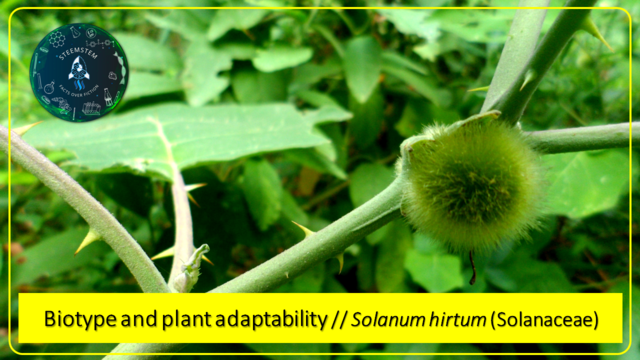
Dear friends, followers and members! of the Steem platform.
In this new delivery, I will share with you what is related to the Defensive morphological adaptability of Solanum hirtum (Solanaceae), a plant species of semi-herbaceous BIOTYPE to woody, shrub bearing and organographic structures in the form of spines, used as a defense mechanism against natural enemies, mainly herbivores.
Introduction
Vegetable species have morphological structures that they use as defensive devices against the attack of herbivorous food animals [2], among the known biological resources that show defensive structures is Solanum hirtum, artificially located within the Solanaceae taxon, from semi-herbaceous to woody biotype and shrub bearing.
The defensive devices exhibited by Solanum hirtum have been catalogued as sophisticated mechanical resources, specifically because they have sharp physical structures such as spines, which use these plant biotypes as a defence mechanism against grazing and browsing by herbivorous animals, a strategic defensive system of a physical nature that prevents the loss of vegetative and reproductive organs during phenological growth [6].
Therefore, in the post, we will be describing the defensive morphological adaptability mechanism of the species Solanum hirtum (Solanaceae), relating its defensive method and the physical-structural characteristics used as protective mechanism.
Biotype and plant adaptability
As a result of evolution, plant species throughout their life cycle have adapted a series of morphological mechanisms, with the aim of confronting biotic factors that are adverse to them, including attacks by animals that feed on foliar leaves, succulent stems and fruits, basically to put their reproductive success before mitigating the damage caused to their organographic structures [7].
Consequently, in this segment we will describe the main organographic structures of the solanaceae species, from semi-herbaceous to woody biotype and shrub bearing Solanum hirtum, used as a defense mechanism to repel the attack of herbivorous agents.
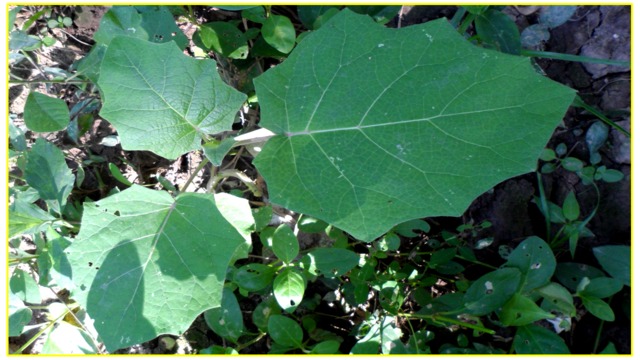
Fig. 2 Specimen Cat egg Solanum hirtum (Solanaceae), growing wild in natural environments south of Lake Maracaibo - Venezuela. Author: @lupafilotaxia.
Biological characteristics
The Egg of cat as it is commonly called in Venezuela to Solanum hirtum, is identified as a non domesticated species of shrub bearing, with perennial phenological duration, semi-herbaceous consistency to woody and organographic adaptability of phanerophytic condition, which indicates that this vegetal species, possesses vegetative and reproductive buds as much in intermediate knots as caulinares apicals, on the 50 cm of the ground, adapting its external morphological structures to subsist in unfavorable conditions.
Morphological adaptations
The evolutionary adaptability and external morphological characteristics observed in Solanum hirtum, are considerably homogeneous, to present epidermal excresences in a pointed way on its foliar and caulinares structures, biological element that favors its vegetative and reproductive cycles, guaranteeing its survival in wild ecosystems with herbivorous dominance.
Ecological amplitude
In relation to the conditions of ecological amplitude, it is admitted that the optimal growth, development and reproduction of the Solanum hirtum cat egg, is registered with differential edafoclimatic behaviors, particularly for its relative sensitivity to excess rain and light intensity, temperature ranges from 15ºC to 24ºC, relative humidity of 80 %, precipitation at intervals of 1,500 and 3,000 mm annually and soils preferably humid, deep and rich in organic matter [3].
Defensive devices
Leaf spines
Within the natural ecosystems, Solanum hirtum receives different biotic stimuli that affect its growth, this because its foliar laminae are a source of food for certain herbivorous species, among these: bovines and ruminant equines, which consume vegetative structures to obtain necessary nutrients and thus satisfy their nutritional needs, to which S. hirtum responds, mining the beam and back of its sheets with foliar spines as a defensive technique, establishing damage to the buccal structures and at the same time creating palatability rejection (pleasure when consuming food) in these animals.
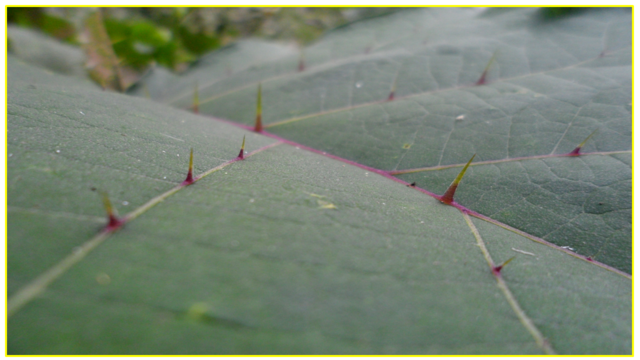
Fig. 3 Leaf film with spine-shaped excresences, as a physical defensive system in the plant species Cat egg Solanum hirtum (Solanaceae). Author: @lupafilotaxia.
Caulinary spines
Whereas on the caulinar structure (stem) of plant species, reproductive buds are developed, Solanum hirtum as a system of mechanical protection against the attack of herbivorous species, has perfected a sophisticated defensive method, by means of caulinar spines strategically arranged around floral structures and immature fruits, which prevent the successive consumption of these morphological structures and in turn guarantee their adaptive biological efficacy.
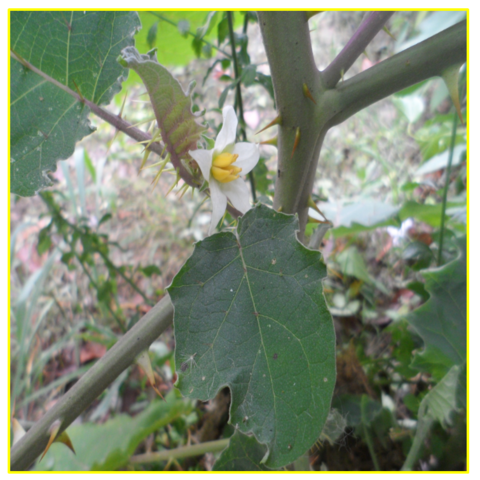
Fig. 4 Caulinar segment with spines around the flower as a defence mechanism in the plant species Solanum hirtum cat egg (Solanaceae). Author: @lupafilotaxia.
Field morphological study
Species and area of study
In order to socialize some vegetal systems of mechanical defense, by means of morphological structures type thorns, that show the species of biotype semiherbaceous to woody, I will socialize with all of you a study on the morphological adaptability that show the Egg of cat Solanum hirtum (Solanaceae), the area of study corresponds to forested relics of the South of the Lake of Maracaibo - Venezuela.
Methodological approach
To determine the morphological characteristics of the Solanum hirtum (Solanaceae) cat egg, in situ observations were carried out, consisting of: determining the location of epidermal excresences and characterising the morphology of foliar and caulinary spines.
Morphological results
Location of epidermal excresences
According to the foliar and caulinar fragments evaluated, the epidermal excresences in the form of thorns, in the case of the leaves are located in: A. main nervures, B. secondary nervures and C. petioles, while in the caulinary region, are appreciated in the A. nodes, B. entrenudos and C. base of reproductive buds, it is estimated that the formation of these pointed structures obeys to a special strategy of induced defense, that seeks to protect on the one hand the photosynthetically active laminae and simultaneously protect the flowers and fruits of Solanum hirtum to the primitive herbivorous consumption.
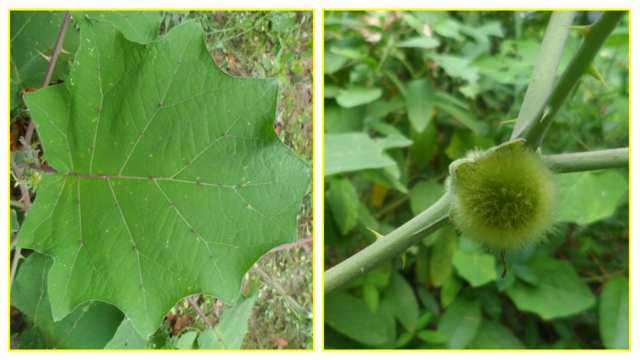
Fig. 5 Strategic location of spine-shaped epidermal excresences in the plant species Cat egg Solanum hirtum (Solanaceae). Author: @lupafilotaxia.
Morphology of foliar and caulinary spines
According to the observations made in situ, the morphological characteristics of the foliar and caulinary spines, are relatively similar to present sharp, sharp aspect, sharp apex in the form of hook, strongly lignified consistency (hardened) and average size around 1 cm long.
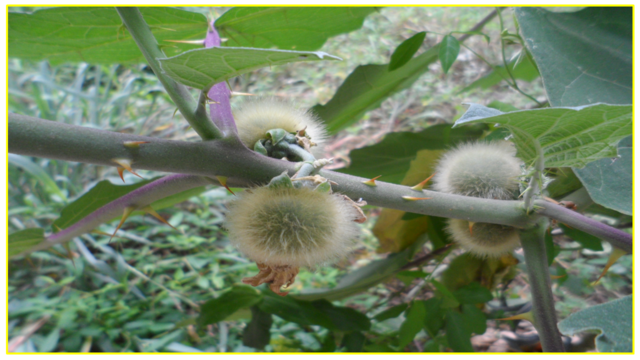
Fig. 6 Morphological characteristics of foliar and caulinary spines, exhibited by the plant species Solanum hirtum (Solanaceae). Author: @lupafilotaxia.
SCIENTIFIC CONTRIBUTIONS OF THIS PUBLICATION
- The content shared with the entire academic community of the STEEM ecosystem is a botanical contribution that undoubtedly schematizes the maximum mechanical defensive expression shown by plant species, by reinforcing the evolutionary resistance exhibited by Solanum hirtum (Solanaceae), as a consequence of the pressure exerted by certain herbivorous animals in natural environments, resistance mediated by the arrangement of structures in the form of spines, which are strategically located in foliar and caulinary segments, whose morphological elements constitute a specific control, which avoids the use of their vegetative and reproductive organs by biotic factors. In the same way, the aspects considered in the post, offer descriptive information for future investigations where variables can be valued as for example; the mechanical action of the foliar and caulinares thorns on the palatability in specific species (bovines or ruminant equines).
BIBLIOGRAPHICAL REFERENCES CONSULTED AND CITED:
[1] Arimura G., Ozawa R., Kugimiya S., Takabayashi J., Bohlmann J. Herbivore-induced defense response in a model legume. Two-spotted spidermites induce emission of (E )-β-ocimene and transcript accumulation of (E )-β-ocimene synthase in Lotus japonicus. Plant Physiol. 2004;135:1976-1983.
[2] Barone J., and Coley P. “Herbivorismo y las defensas de las plantas”. In: M.R. Guariguata & G.H. Kattan (Eds.). Ecología y conservación de bosques neotropicales. LUR, Costa Rica. 2002;464-492.
[3] Bernal J., y Franco G. El Cultivo del Lulo bajo la implementación de las Buenas Prácticas Agrícolas. Manual Técnico. Secretaria de Agricultura y Desarrollo Rural de Antioquia. Colombia. 2007;174.
[4] Järemo J., and Palmqvist E. Plant compensatory growth: a conquering strategy in plant-herbivore interactions? Evolutionary Ecology. 2001;15;2:91-102.
[5] Oyama K., and Espinoza F. Herbívoros y plantas ¿Como interactúan?. Ciencias, revista de difusión. 1986;38-44.
[6] Pamela K. Developmental plasticity, genetic variation, and the evolution of andromonoecy in Solanum hirtum (Solanaceae). American Journal of Botany. 1993;80;8: 967-973.
[7] Ryals J., Neuenschwander U., Willits M., Molina A., Steiner H., and Hunt M. Systemic acquired resistance. The Plant Cell. 1996;8:1809-1819.
ATTENTION / Readers and Followers
If you want to read more scientific articles of excellent academic quality, do not waste time, and visit the label #steemSTEM, is a large community that values and promotes scientific content, mainly in the areas of Science, Technology, Engineering and Mathematics.

INVITATION
Dear reader, if you wish to obtain more information about it, join our server in Discord
OBSERVATIONS
✔ The POST 📧📨 was uploaded using the official app of https://www.steemstem.io
OBSERVATIONS
✔ The POST 📧📨 was uploaded using the official app of https://www.steemstem.io
You can visit the official app of our community
https://www.steemstem.io
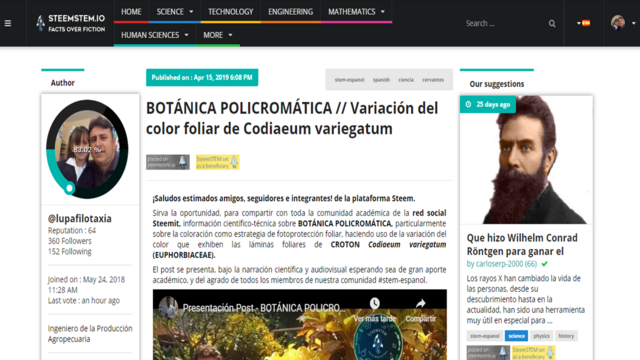

Congratulations, your post has been upvoted by @dsc-r2cornell, which is the curating account for @R2cornell's Discord Community.
Thank you @dsc-r2cornell, for your support
Esta publicación ha sido votada por Steemitas Club. Felicidades @lupafilotaxia y gracias por compartirnos este trabajo original.
Curado por @ritch
Gracias al equipo de curadores de @stemitasclud, en especial a @ritch por el apoyo brindado.
This post has been voted on by the SteemSTEM curation team and voting trail. It is elligible for support from @curie and @minnowbooster.
If you appreciate the work we are doing, then consider supporting our witness @stem.witness. Additional witness support to the curie witness would be appreciated as well.
For additional information please join us on the SteemSTEM discord and to get to know the rest of the community!
Thanks for having used the steemstem.io app and included @steemstem in the list of beneficiaries of this post. This granted you a stronger support from SteemSTEM.
Thank you team SteemSTEM.
This article has been selected and voted by @omnesplantae Content Curator. You have received 3 OmnesPlantae Token (OP)
Visit the discord server for a 360 ° travel experience! https://discord.gg/zd7vFSz